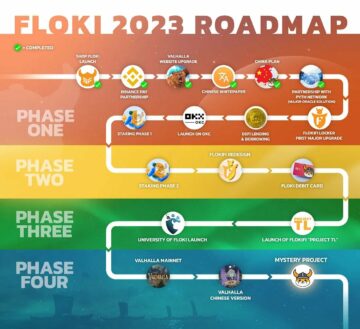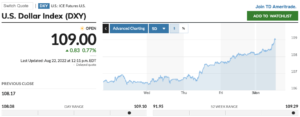
As the world becomes increasingly interconnected, the need for efficient, secure, and cost-effective cross-border payment solutions has never been more pressing. Central banks around the globe are exploring the potential of digital currencies to transform the international financial landscape, and XRP, the native cryptocurrency of the XRP Ledger, has features that could make it a viable option for consideration.
XRP boasts fast transaction times (3-5 seconds), low fees ($0.0002 per transaction on average), and scalability (1,500 transactions per second), which could potentially reduce the time and costs associated with international money transfers. However, it is important to note that other cryptocurrencies and blockchain projects also offer similar features, and the adoption of XRP by central banks would depend on various factors beyond its technical capabilities.
One of the potential advantages of XRP is its ability to provide real-time gross settlement (RTGS), allowing for the immediate and final settlement of transactions. This could be beneficial for central banks, as it reduces settlement risk and enhances financial stability. By leveraging XRP, central banks might be able to minimize the need for nostro/vostro accounts, freeing up capital and reducing operational costs. However, the extent to which central banks would adopt XRP for this purpose remains uncertain.
<!–
–>
<!–
–>
If adopted by central banks, XRP could potentially lead to increased liquidity in the cross-border payments market. As more financial institutions and central banks use XRP as a bridge currency, it could create a network effect, attracting even more participants and further enhancing the efficiency of international money transfers. Nevertheless, it is crucial to recognize that this scenario is hypothetical and would require significant adoption and coordination among central banks and financial institutions.
Ripple, a company that utilizes XRP in its suite of products, has formed partnerships with various financial institutions and central banks to explore the use of its technology for cross-border payments. While these partnerships demonstrate interest in Ripple’s solutions, they do not necessarily imply the direct adoption of XRP by these banks.
In conclusion, XRP has features that could potentially make it an attractive option for cross-border payments, such as fast transaction times, low fees, and scalability. However, its widespread adoption for this purpose remains uncertain, as there are various challenges and factors to consider, including regulatory clarity, competition from other blockchain projects and traditional payment systems, and the need for coordination among financial institutions.
- SEO Powered Content & PR Distribution. Get Amplified Today.
- PlatoData.Network Vertical Generative Ai. Empower Yourself. Access Here.
- PlatoAiStream. Web3 Intelligence. Knowledge Amplified. Access Here.
- PlatoESG. Carbon, CleanTech, Energy, Environment, Solar, Waste Management. Access Here.
- PlatoHealth. Biotech and Clinical Trials Intelligence. Access Here.
- Source: https://www.cryptoglobe.com/latest/2024/03/xrp-revolutionizing-cross-border-payments-exploring-the-potential-and-challenges/
- :has
- :is
- :not
- $UP
- 1
- 500
- a
- ability
- Able
- Accounts
- adopt
- adopted
- Adoption
- Ads
- advantages
- All
- Allowing
- also
- among
- an
- and
- ARE
- around
- AS
- associated
- attracting
- attractive
- average
- Banks
- BE
- becomes
- been
- beneficial
- Beyond
- blockchain
- blockchain projects
- boasts
- BRIDGE
- by
- capabilities
- capital
- central
- Central Banks
- challenges
- clarity
- company
- competition
- conclusion
- Consider
- consideration
- coordination
- cost-effective
- Costs
- could
- create
- cross-border
- cross-border payments
- crucial
- cryptocurrencies
- cryptocurrency
- CryptoGlobe
- currencies
- Currency
- demonstrate
- depend
- digital
- digital currencies
- direct
- do
- effect
- efficiency
- efficient
- Enhances
- enhancing
- Even
- explore
- Exploring
- extent
- factors
- FAST
- Features
- Fees
- final
- financial
- Financial institutions
- financial stability
- For
- formed
- freeing
- from
- further
- globe
- gross
- However
- HTTPS
- immediate
- imply
- important
- in
- Including
- increased
- increasingly
- institutions
- interconnected
- interest
- International
- IT
- ITS
- jpg
- landscape
- lead
- Ledger
- leveraging
- Liquidity
- Low
- low fees
- make
- Market
- might
- minimize
- money
- Money Transfers
- more
- native
- necessarily
- Need
- network
- never
- Nevertheless
- note
- of
- offer
- on
- operational
- Option
- Other
- participants
- partnerships
- payment
- payment solutions
- Payment Systems
- payments
- per
- plato
- Plato Data Intelligence
- PlatoData
- potential
- potentially
- pressing
- Products
- projects
- provide
- purpose
- real-time
- recognize
- reduce
- reduces
- reducing
- regulatory
- remains
- require
- Risk
- RTGS
- s
- Scalability
- scenario
- Screen
- screens
- Second
- seconds
- secure
- settlement
- significant
- similar
- sizes
- Solutions
- Stability
- such
- suite
- Systems
- Technical
- Technology
- that
- The
- the world
- There.
- These
- they
- this
- time
- times
- to
- traditional
- transaction
- Transactions
- transfers
- Transform
- Uncertain
- use
- utilizes
- various
- viable
- which
- while
- widespread
- with
- world
- would
- xrp
- XRP Ledger
- zephyrnet












